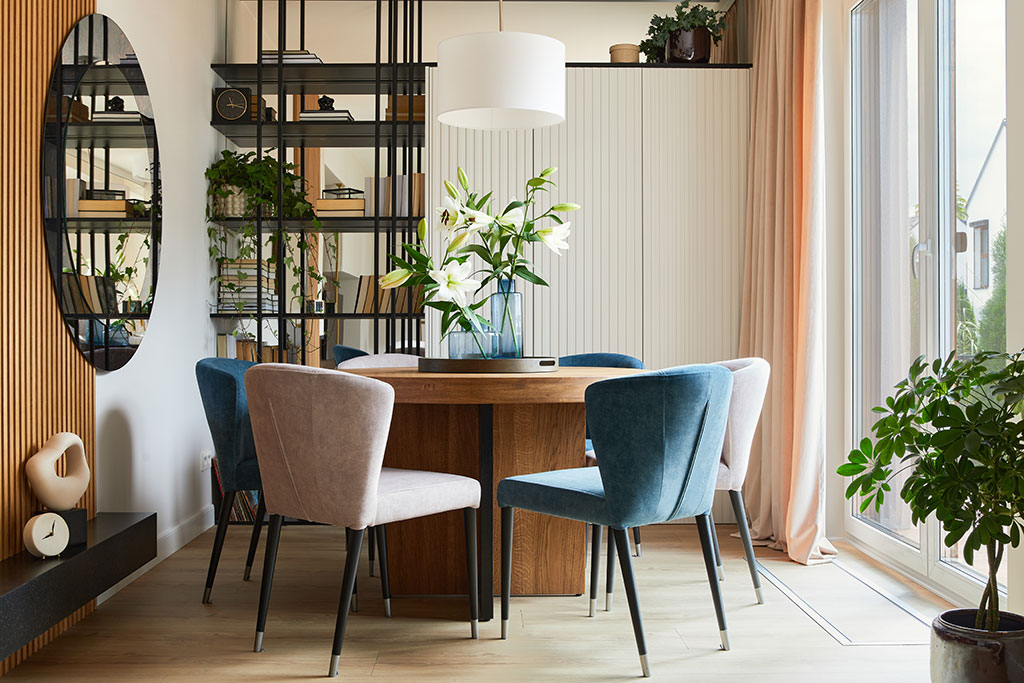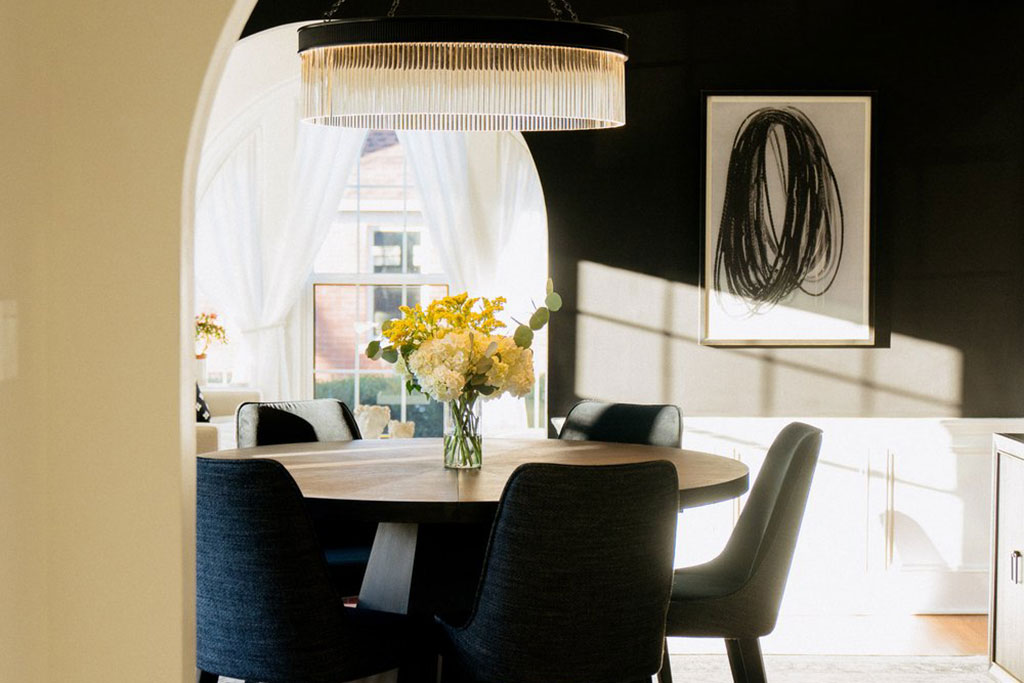After falling out of fashion for a few years, dining rooms are in vogue once again.
But they aren’t the strictly formal areas they were before—they’re now also being used as places to work, hang out with friends and family, and relax. If you’re interested in such a multipurpose space, follow these tips to create a dining room that best fits your needs.

Photo by Bethany Crum
Start with an intention
First, determine how you want the room to look and feel—it can be formal, casual, or anything in between. For example, Bethany Crum of Crummy Designs converted her den into a fun, casual dining area to make her home more functional for her young family of six. She pulled up the carpeting, revealing beautiful hardwood floors beneath, and painted the walls a crisp white and the fireplace a happy yellow, which helped brighten up the space.
Meanwhile, content creator Caralyn Mirand Koch designed her dining room to double as an everyday eating area and a sophisticated workspace. She explains, “The dining room is just off the main entrance, so I wanted it to be welcoming and visually appealing but still be multifunctional.” Koch painted the walls in Benjamin Moore Jet Black and the wainscoting in Sherwin-Williams Pure White while incorporating beautiful artwork and gold-hued candlesticks to create a glamorous feel. She then added a round dining table and a luxurious buffet table, which also serves as storage space for office supplies.
If you don’t have a separate room you can designate as your dining area, you could simply use the eat-in area of a kitchen, the corner of an open floor plan, or another available space in your home. You’ll just need to define the space, such as by anchoring it with an area rug or by hanging an eye-catching chandelier above the table.

Make it multifunctional
When designing your dining room, you should keep both form and function in mind, especially if you want it to serve several purposes. For instance, Crum, whose kids enjoy reading, put an upholstered IKEA Tullsta armchair in one corner of her dining area to create a cozy reading nook. “When you decide how a room should function instead of letting the space determine that, you’ll love and use it so much more,” she says.
Choose your table
The most important element in your dining room will be your table, so try to pick one that suits your needs and your desired look. The dimensions of the space will likely dictate the size of your table, but other considerations, such as your budget and how you plan use your room, will also factor in. Crum has a large farmhouse-style table handed down from her parents; its size and durability are perfect for the family’s sit-down dinners, game nights, and craft sessions. In contrast, Koch centered an Emerson Round Dining Table in her dining room that can be expanded when she needs a larger surface. While Crum’s naturally distressed table has a rustic look, the dark oak and brass detailing on Koch’s dining table makes her room feel more formal and elegant.
Select your fixture
There are many ways to illuminate a dining space. For example, you could add recessed or pendant lighting or go with the traditional chandelier hung over the center of the table—what you decide on can set the mood for your entire dining area. Crum’s bright and modern dining room is decorated with a midcentury modern glass-bubble chandelier to bring in a fun pop of personality. Meanwhile, Koch’s dining room is accentuated with a luxurious bronze and crystal chandelier. The convention is to choose a chandelier that’s one-half to three-quarters the width of your table and hung about thirty to thirty-two inches above it, but you could also deviate from those guidelines to create a look all your own.

Photo by Caralyn Mirand Koch
Pick your palette
Selecting an appealing color scheme is a one way to make your dining room look brand-new. Once you’ve made your choice, you can paint your walls in your chosen hue and pick coordinating accessories like table linens, upholstery, and curtains. For example, if you want a light and airy feel, you could paint the walls white or beige and bring in pieces in soothing browns, creams, grays, whites, and blacks. Or if you’d prefer a deep color and drama in your space, you could select a jewel tone like emerald green for your walls and pair it with pops of bright yellow or purple.
Personalize with decor
Accessorizing your dining area with items that appeal to you is the ideal way to get the vibe you want in your space. Crum and her husband, who enjoy collecting artwork, created a colorful gallery wall in their dining room, while Koch hung delicate botanical prints and added gold-toned sculptural pieces, potted plants, and some of her favorite coffee-table books to accentuate her space. Whatever your interests, your dining room should represent you—after all, you’re the one who will be spending the most time in it.
Whether you want a cozy eating nook for two or a place to host holidays and parties, you’ll find an almost endless variety of options to choose from to create your perfect dining space.